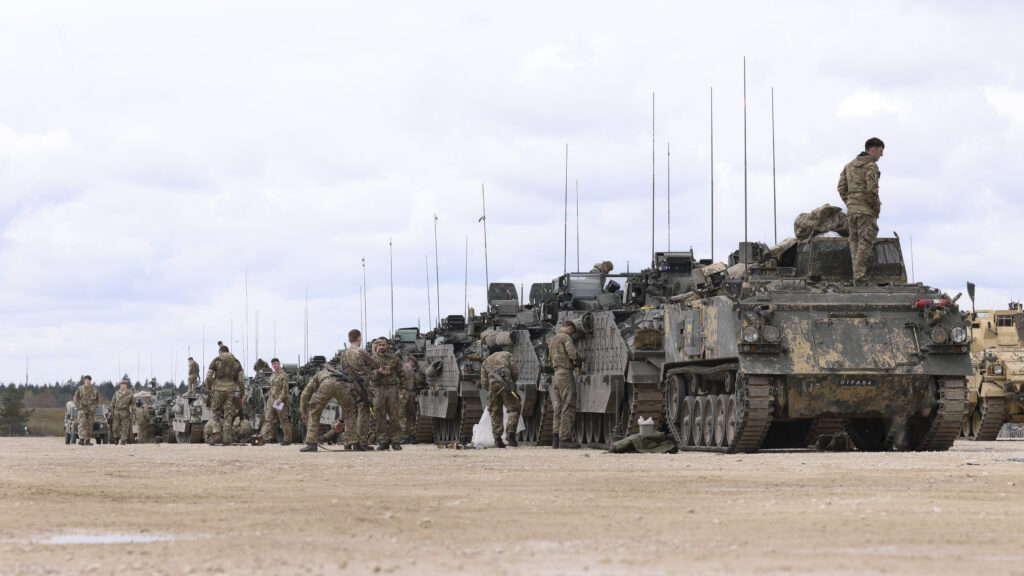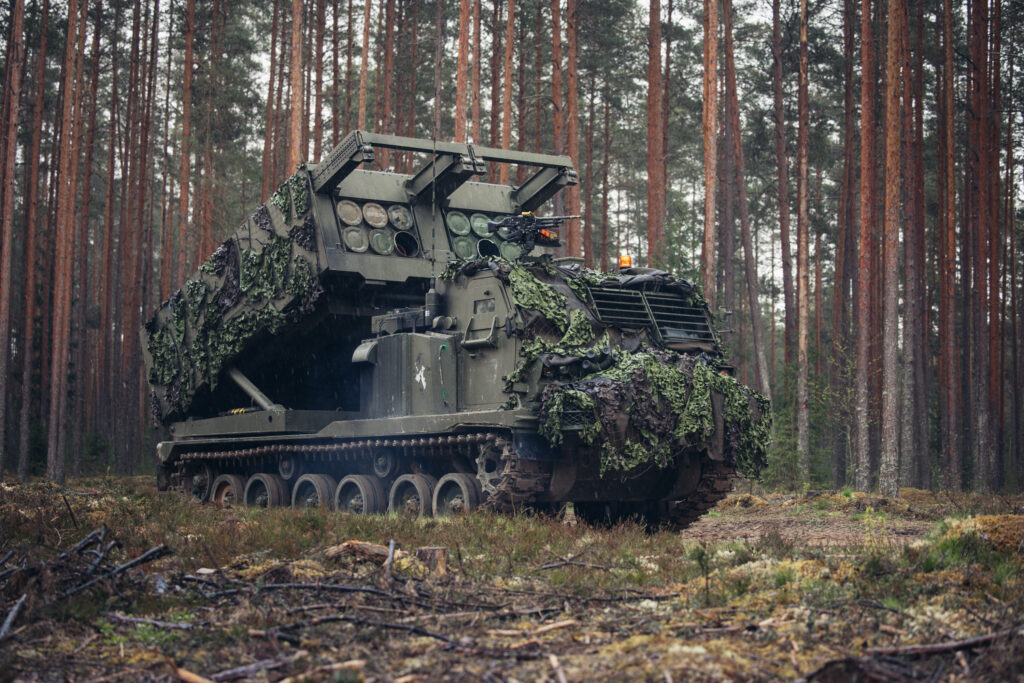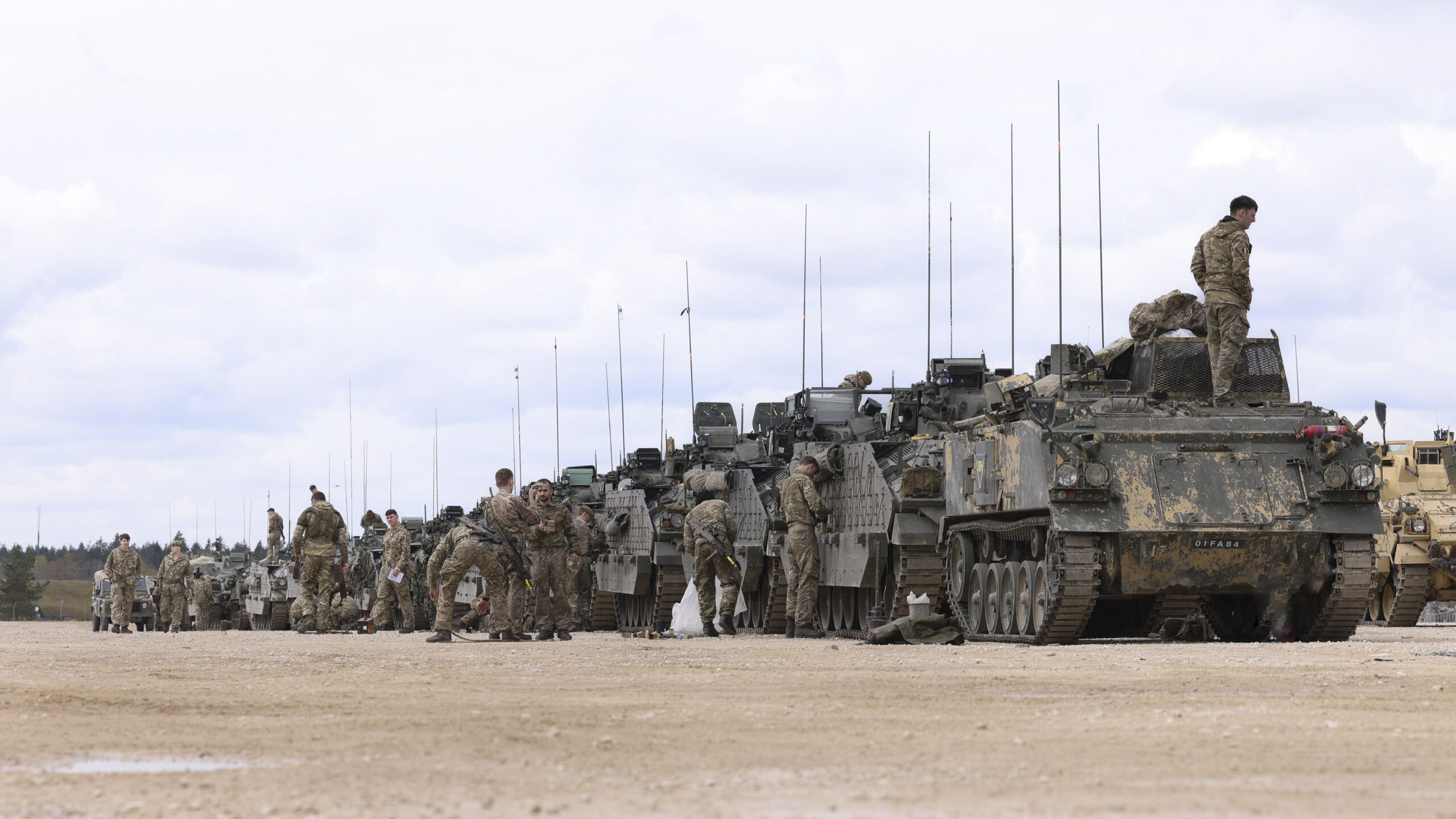The UK’s Strategic Defence Review (SDR) places NATO at the heart of the UK’s defence posture and the British Army is no exception to this. The Allied Rapid Reaction Corps (ARRC), a corps-level headquarters that is commanded by British personnel, has been asked to provide NATO with two divisions, and this is the context through which the army’s role should be seen. This means that the 3rd Division, an armoured formation, and 1st Division, made up of light infantry, will be required to ensure that they are ready to deploy as one of NATO’s strategic reserve corps. At the same time the army will be required to maintain its contribution to the NATO forward presence in Poland and Estonia.

Other important elements relate to the British Army’s training estate and capabilities. During the Cold War it was relatively straightforward for NATO units to practise large-scale manoeuvres and operations in Europe. There were vast areas designated for training, with the land owners and farmers compensated for the inevitable damage and disruption. With the end of these exercises, most forces consolidated to a select few training areas. For the British Army this is the Salisbury Plain Training Area, which is so well known to many soldiers that they can guess where their opposition force is likely to be. It is also limited in size, restricting the charges that artillery can be fired at and more or less preventing the use of unmanned aerial vehicles (UAVs). Moreover, it is very difficult for British units to practise with electronic warfare (EW) and signals intelligence (SIGINT) assets, which are critical for survivability against a peer adversary. To remedy this the review recommends advanced simulation, which “would provide more effective and efficient training”, it claims.
The army already leverages a lot of simulators in its training, like the Joint Terminal Attack Controller (JTAC) simulators provided by Elbit Systems UK, for instance. However, simulators struggle to replicate elements of fighting a war that are very hard. Things like the logistics involved in mobilising an armoured division can only be practised through physically deploying the equipment, removing it from storage and taking ammunition out of its depots and arming vehicles. The same goes for conducting a divisional or corps fire plan with artillery, all of which creates a lot of pressure on the logistics infrastructure supporting a deployed formation, from the trucks to the staff and the roads between depots and barracks. If this is not practised, the British Army would risk finding intractable challenges in the event of a war – especially if it disperses its ammunition around Europe, as the report also recommends. The SDR also advises that the UK seek out training locations that can support long-range strike training at distances over 100 km. This makes good sense as deep recce-strike operations are positioned as a key element of the British Army’s approach to war.

The final 40% requires a lot of work, however. The British Army has donated to Ukraine much of its ammunition, both in terms of artillery ammunition and rockets, as well as its available tactical missiles. Its stockpiles were not significant in any case and replenishing them will take time and money. The procurement of loitering munitions could prove beneficial and UK entities like Anduril UK and Helsing are potentially well positioned to provide those systems. However, the efficacy of those effectors will depend entirely upon the success of the UK’s intelligence, surveillance, target acquisition and reconnaissance (ISTAR) programmes, including Projects Tiquila and Corvus, as well as the success in integrating all the systems procured into Zodiac: the army’s digital backbone.

No quick fixes
Fundamentally, however, there is a rocky road ahead for the British Army. Like all of the services, it is suffering from several capabilities being gapped. However, there are many procurements and programmes that are now non-discretionary. Ground-based air defence (GBAD) will be critical to all future deployments as, without it, the army could be held at risk by even a poorly resourced non-state actor. The army’s long-range reconnaissance capability has been retired early and it is reliant on Project Corvus for a replacement. The mechanised infantry, which would be responsible for a lot of the firepower and manoeuvre that the SDR rightly states to be essential, will soon be without an infantry fighting vehicle (IFV) as the Warrior fleet is retired. This will leave British soldiers to fight as best they can from the Boxer wheeled multi-role armoured vehicle, which lacks both the mobility and firepower of the armoured vehicles it replaces. The Land Rover tactical vehicle fleet cannot be maintained any longer, and nor should the Pinzgauer tactical vehicles remain in service beyond 2030, creating a demand for some 7,000 tactical vehicles under the Land Mobility Programme. Additionally, the SA80A3 assault rifle, which has been in British service for more than 30 years, is now also in need of replacement. To top all of this off, the UK’s gifting of much of its ammunition and artillery to Ukraine has led one observer to recently joke that the army’s lethality could be rapidly improved by simply buying ammunition.
The big question over all of this is funding. There are multiple recommendations within the SDR that will potentially require billions of pounds in funding over several governments, which could leave precious little room for the army and force it once more to make difficult decisions. The concept of the UK buying additional F-35 Joint Strike Fighters has been raised and, at the very least, the UK’s carrier fleets will be ‘hybridised’. This will necessitate the procurement of autonomous and uncrewed platforms to operate as a part of the carrier air wing, and while some systems in that space are likely to be relatively insignificant in terms of cost, others, like loyal wingmen for fighter aircraft, will cost tens of millions each. Similarly, the Labour government has signalled its intent to buy up to 12 SSN-AUKUS nuclear-powered attack submarines (SSNs) as a replacement for the Royal Navy’s current Astute-class SSNs. The Astute programme is estimated to have cost more than GBP 12 billion (EUR 14.2 billion) throughout its build phase, with each submarine costing at least GBP 1 billion to build. The costs for SSN-AUKUS boats are unlikely to be lower, although the programme may proceed more smoothly than the Astute programme.
At the same time a significant investment has been pledged to the UK’s nuclear deterrent and Defence Nuclear Enterprise, with some GBP 15 billion to recapitalise the UK’s nuclear warheads under a programme called Astraea. The whole enterprise is now expected to cost at least GBP 130 billion over the next decade: an increase of GBP 10 billion on an expenditure that already accounts for 18% of the UK’s annual defence budget. It is a necessary expense, as Russia has proven its willingness to threaten nuclear strikes during a period of escalated tension, but the hard truth is that renewing and maintaining the UK’s nuclear deterrent at the same time as modernising the air force and ‘hybridising’ the navy will be prohibitively expensive. This is to say nothing of the GBP 6 billion pledged for new munitions and munitions factories, the GBP 1 billion on homeland air and missile defence, and GBP 1 billion to integrate the armed forces into the Digital Targeting Web by 2027.

So, it is apparent that the Labour government is in a difficult situation, while the British Army, with many legacy capabilities about to retire, could potentially see some of its planned procurements revised down.
Sam Cranny-Evans is a consultant and journalist based in the UK. He specialises in land warfare and the technologies shaping the way armed forces fight. Sam previously worked at Janes and is a RUSI associate fellow.





![2025 in the Western Balkans: A year-end SITREP Soldiers from the Czech company, part of the EUFOR Multinational Battalion, conducted a series of joint training exercises in Mostar alongside operators from Bosnia’s State Investigation and Protection Agency (SIPA). [EUFOR BiH]](https://euro-sd.com/wp-content/uploads/2025/11/Handshake_EUFOR-BiH-218x150.jpg)

![Stratus symbol Initially deployed during Operation Granby, the United Kingdom’s contribution to Operation Desert Storm in 1991, the RAF’s air-launched anti-radiation missile proved to be a radar killer. The missile remained in service, and in the RAF’s inventories, until 2013. [Thomas Withington]](https://euro-sd.com/wp-content/uploads/2025/11/ALARM-Thomas-Withington-Kopie-218x150.jpg)

![Baltic Security: SITREP : US Soldiers assigned to 3rd Battalion, 8th Cavalry Regiment, 3rd Armored Brigade Combat Team, 1st Cavalry Division, Task Force Iron, fire a M1A2 Abrams tank during a live-fire demonstration for Iron Defender 25 at Orzysz Training Area, Poland, on 17 September 2025. [US ARNG/Sgt Eric Allen]](https://euro-sd.com/wp-content/uploads/2025/11/Abrams-firing_US-ARNGSgt-Eric-Allen-Kopie-218x150.jpg)


